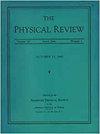Metal-insulator transition and magnetism of SU(3) fermions in the square lattice
引用次数: 2
Abstract
We study the SU(3) symmetric Fermi-Hubbard model (FHM) in the square lattice at $1/3$-filling using numerically exact determinant quantum Monte Carlo and numerical linked-cluster expansion techniques. We present the different regimes of the model in the $T\text{\ensuremath{-}}U$ plane, which are characterized by local and short-range correlations, and capture signatures of the metal-insulator transition and magnetic crossovers. These signatures are detected as the temperature scales characterizing the rise of the compressibility, and an interaction-dependent change in the sign of the diagonal spin-spin correlation function. The analysis of the compressibility estimates the location of the metal-insulator quantum critical point at ${U}_{c}/t\ensuremath{\sim}6$, and provides a temperature scale for observing Mott physics at finite $T$. Furthermore, from the analysis of the spin-spin correlation function we observe that for $U/t\ensuremath{\gtrsim}6$ and $T\ensuremath{\sim}J=4{t}^{2}/U$ there is a development of a short-range two-sublattice (2SL) antiferromagnetic structure, as well as an emerging three-sublattice (3SL) antiferromagnetic structure as the temperature is lowered below $T/J\ensuremath{\lesssim}0.57$. This crossover from 2SL to 3SL magnetic ordering agrees with Heisenberg limit predictions, and has observable effects on the density of on-site pairs. Finally, we describe how the features of the regimes in the $T\ensuremath{-}U$ plane can be explored with alkaline-earth-like atoms in optical lattices with currently achieved experimental techniques and temperatures. The results discussed in this paper provide a starting point for the exploration of the SU(3) FHM upon doping.方形晶格中SU(3)费米子的金属绝缘体跃迁和磁性
本文利用数值精确行列式量子蒙特卡罗和数值链接簇展开技术,研究了$1/3$ -填充处方形晶格中的SU(3)对称费米-哈伯德模型(FHM)。我们在$T\text{\ensuremath{-}}U$平面上展示了模型的不同区域,它们具有局部和短程相关的特征,并捕获了金属-绝缘体跃迁和磁交叉的特征。这些特征是通过表征可压缩性上升的温度尺度和对角线自旋-自旋相关函数符号的相互作用依赖变化来检测的。可压缩性分析估计了金属绝缘体量子临界点${U}_{c}/t\ensuremath{\sim}6$的位置,并提供了在$T$有限条件下观察莫特物理的温标。此外,从自旋-自旋相关函数分析我们观察到,对于$U/t\ensuremath{\gtrsim}6$和$T\ensuremath{\sim}J=4{t}^{2}/U$,随着温度降低到$T/J\ensuremath{\lesssim}0.57$以下,出现了短程两亚晶格(2SL)反铁磁结构,以及出现了三亚晶格(3SL)反铁磁结构。这种从2SL到3SL磁序的交叉符合海森堡极限预测,并且对现场对的密度有可观察到的影响。最后,我们描述了如何在目前实现的实验技术和温度下,利用光学晶格中的类碱土原子来探索$T\ensuremath{-}U$平面中的政权特征。本文所讨论的结果为探索掺杂后的SU(3) FHM提供了一个起点。
本文章由计算机程序翻译,如有差异,请以英文原文为准。
求助全文
约1分钟内获得全文
求助全文

 求助内容:
求助内容: 应助结果提醒方式:
应助结果提醒方式:


